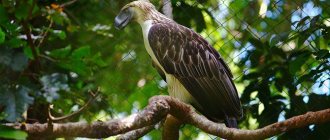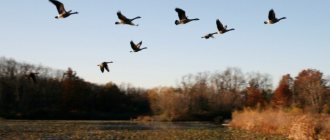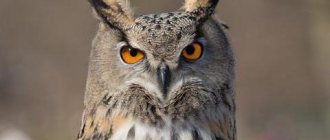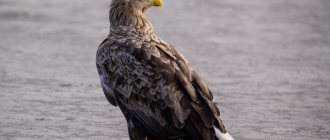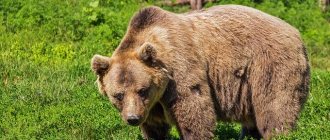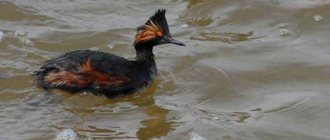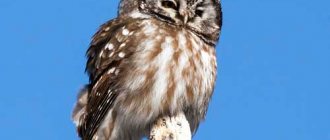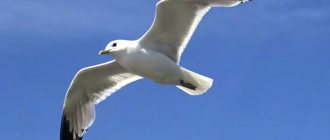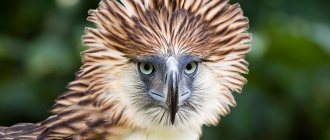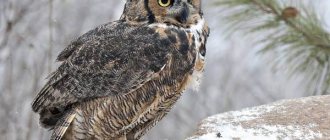This article will focus on the diurnal birds of prey on our planet.
A bird of prey is one that pursues other animals in order to get food for itself, that is, it hunts in flight. Diurnal birds of prey use their keen vision, curved beaks and strong talons to hunt live prey. There are about 300 species of diurnal birds of prey in the world, including about 50 species found in Russia.
The order "Durnal Birds of Prey" is divided into two categories of diurnal hunting - Falconiformes and Accipitriformes: Falconiformes (Falconiformes) and Accipitriformes, respectively. Accipitridae have 4 classes: Accipitridae (the largest in number), Ospreys, Secretaries and American vultures. But there is also a detachment of nocturnal birds of prey - Strigiformes, which belong to the Owl species (Owls and Barn Owls).
Detachment “Day Birds of Prey”: photo and brief description of the Sokolin class
Diurnal birds of prey in the Falcon order contain 11 families and 60 species.
- Lesser kestrel (steppe)
This is a small predator of the Falcon species. The female differs from the male in size and color of plumage, so it is impossible to confuse them. The only similarities they have are their dark eyes framed in yellow and a strong beak. The male has a blue-gray head, a reddish-brown back, a light-colored underpart without a pattern, and the tail feathers are blue-gray edged with black. The female has a rusty brown back and rufous tail feathers that are covered with black stripes and edged with a white outline.
Listed in the Red Book of Russia!
Comparison
- Merlin
It belongs to the genus of falcons in North America and the northern latitudes of Eurasia, for example in Norway, Sweden, Finland, Iceland and Siberia. This is a fairly large bird, about 55-60 cm. Females and males look the same, but the female is larger and heavier by about 0.5-1 kg. Depending on the area of residence, their upper plumage varies from brownish-gray or with a blue tint to light gray; the abdominal region is always light. They have dark spots all over the body, the so-called mustache near the mouth opening is barely noticeable. The beak has a tooth characteristic of falcons, and the paws are yellow.
The population is declining!
Merlin
- Peregrine Falcon
Known for their speed, peregrine falcons are the fastest on the planet. Their vertical speed during diving is more than 300 km/h; during normal flight while hunting, they can reach 100 km/h. Females are larger than males. Body length ranges from 34-50 cm, male weight up to 750 g, females reach 1.5 kg. The wingspan is up to 1.2 m. Both sexes have slate-gray wings, back and hood with a black tint, and pale bellies marked with brown stripes.
The population is declining!
The fastest
Barn owls
The category of nocturnal birds of prey also includes birds from the barn owl family. In their appearance, these creatures partly resemble owls. Their facial disc, like those described above, is also clearly defined, only it narrows downwards, taking the form of a heart-shaped triangle.
And they themselves look more graceful, their wings are pointed, and their head is narrow compared to an owl. The silent flight of barn owls when they hunt for various small animals is betrayed by their specially designed, fluffy feathers. Such predators live on all continents, excluding the cold Antarctica.
Detachment “Day Birds of Prey”: description and photo of Accipitridae
The order “Daytime Birds of Prey” of the Hawk family has about 70 genera, but we will note the most prominent representatives.
- goshawk
It is even considered the largest bird of its species. Females are larger than males. Males reach 600-1100 g with a length of up to 55 cm, and females - up to 60 cm and 860-1600 g. It has a fierce facial expression with bright red or red-brown eyes (in juveniles they are yellow) and a characteristic white eyebrow from feathers Its wide wings with a span of 100-115 cm allow it to hunt at high speed, intertwining with trees, and its long legs and claws can catch its prey in flight.
They feed on birds, reptiles and mammals such as hares, hazel grouse, grouse and squirrels. The color of the feather can be from blue-gray to black, the ventral region is light with pockmarked gray stripes. Juveniles have brown feathers. The beak is black and yellow with a short hook, but powerful and stocky.
Hawk
- Sparrowhawk
It belongs to the Accipitridae family. It can be seen throughout Eurasia and northern Africa. A sparrowhawk can weigh from 180 to 340 g. Moreover, the female is almost 2 times heavier. The male has a length of up to 34 cm with a wingspan of up to 60-64 cm, and the female has a height of 35-41 cm and a wingspan of 70-80 cm. The lower part of the sparrowhawk's plumage is slightly reddish, appearing red from a distance, and the upper part is dark blue-gray. The head is small, with yellow eyes and a yellow eye ring around it. The sparrowhawk usually uses the effect of surprise when hunting.
Translated from Latin it means quail hawk.
- Smoky kite
Also belongs to the hawk family. The female and male look alike in their plumage. The difference between them is the size and weight. The female is slightly larger and heavier, on average weight varies from 230 to 250 g, size - up to 28-35 cm. The upper plumage is from light gray to blue-gray, the head, neck, lower part and tail are white. If they are sitting, they have noticeable black marks, as if on their shoulders. In flight, the wings and wing tips are black below. The legs are yellow, the beak is dark, and the red eyes are framed by black feathers. Its wingspan is approximately 75 cm. It lives in the southern latitudes of Asia, the savannas of Africa, India and Spain.
It is also called black-winged
- Black kite
It is also a member of the order "Birds of Prey", a family of accipitridae. It belongs to the migratory birds of Europe and the native birds of Asia and Australia. The black kite is 50-60 cm in size and has a wingspan of about 1.45-1.55 m. There are no gender differences in plumage, but the difference lies in size and weight. The female is larger and heavier. The black kite's plumage is medium to dark brown, with the undersides finely stippled, sometimes tinged with rufous. The wings are black and the head and neck are light with thin black lines. The eyes are light, the beak is yellow with a black hook. The tail is slightly forked.
Black
- Red kite
Found in southern and central Europe, Asia, Scandinavia and the Caucasus. The red kite is one of the rarest birds of prey in Europe due to constant persecution by people. The red kite is up to 60-70 cm in size, weighing up to 900-1400 g. Its habitat is beech, oak and mixed forests with adjacent cultural landscapes in which they can hunt. The red kite has a light brown or rusty red back, a lighter head with amber eyes. It is characterized by a forked tail. As we can see in the photo, the color below is very interesting if the bird is in flight.
On the verge of extinction!
Red
- Marsh harrier
These are small birds of the hawk family, up to 750 g, up to 36-43 cm long and with a wingspan of 110-140 cm. Females are larger than males. They have a very interesting color of brown, white and brown or black. They hunt quite low above the ground, mainly near water bodies and reed thickets. The diet is based on frogs, fish, eggs and rodents.
Flight
- Buzzard
It is quite large with wide, rounded wings, a short neck and tail. Its length is 51-57 cm, its wingspan is up to 130 cm. The weight of a male is 550-1000 g, a female is 700-1300 g. When gliding and taking off, it often holds its wings in a shallow “V”, and its tail swells. The birds vary in color from all dark brown to much paler varieties, but all have dark wingtips. Their plaintive meow can be mistaken for a cat. The basis of food is small mammals, birds and carrion. Sometimes they even use earthworms and large insects when there are not enough other victims.
True hawk-class buzzard
- Honey Buzzard or Honey Buzzard
This is a large bird of prey that is considered quite rare. She has narrow wings, but with a span of 1.2 m, and a long tail. The plumage is very variable depending on age, so it can be a solid brown or light brown shade, as well as with small streaks reminiscent of scales. The upper side of most is dark brown in color. Females are usually more colorful with white or gray edges, males with a modest brown-black coloration. It mainly eats wasp and bee larvae. Their natural habitat is wooded areas.
A lover of destroying wasps' nests
- Golden eagle
The golden eagle belongs to the hawk family. Golden eagles, like other birds of prey, were illegally poached and became extinct in some regions. Now they can only be found in the northern regions. Females are larger and heavier. Adult golden eagles have uniform dark brown plumage, with light brown or yellowish brown on the head and neck, dark brown eyes, a strong beak with a dark tip, and feathered legs with large yellow talons.
The Golden Eagle's habitat is located in mountain ranges, mainly at high altitudes. Their food consists of marmot, rabbit, deer, partridges, black grouse, and ravens. Golden eagles can carry prey for young animals weighing up to 12 kg. They themselves are large - up to 93 cm in length, up to 4.6 (males) and up to 6.7 kg (females). Wingspan up to 240 cm.
The most famous
- Wedge-tailed eagles
They are Australia's largest birds of prey with a massive wingspan of 1.8 to 2.3 meters. Females are larger than males and can reach 5.3 kg. Both sexes are reddish-brown, darkening to almost black with age. They are easily identified in flight by their characteristic tails, which flash before tapering to a point in the middle. Wedge-tailed eagles are primarily hunters, but they also scavenge. Therefore, they can be seen up close and nearby, as they pick up corpses on rural roads.
In flight
- Bald Eagle
It is the largest bird of prey. There are eight different species of sea eagles. In Europe, the white-tailed eagle is a local bird, and in Russia it is a migratory bird. But its main habitat is Canada and the USA, Mexico. Its size is 70-95 cm, its wingspan is up to 1.8-2.5 m and its weight is up to 3-6.3 kg. Males are smaller, so they have the first performance limits. An adult white-tailed eagle can be identified by its large yellow beak, light-colored head, and white tail. This is the most famous representative of its family.
Popular
- White-bellied sea eagle
With a wingspan of up to 2.2 meters, white-bellied eagles are almost as large as wedge-tailed eagles. And they even have a tail of a similar shape, but that’s where the similarities end. True to their names, adults have white underparts with gray wings and a powerful, hooked beak. Juvenile sea eagles are pale gray and do not have full adult plumage until they are 5 or 6 years old. They are coastal predators and feed mainly on fish caught in the sea or rivers in flight. Their weight reaches 4.5 kg, and their body length is up to 90 cm.
Representative
- Crowned eagle
It belongs to the Accipitridae family and is rightfully considered the most dangerous predator from the order “Birds of Prey”. Its weight is about 7 kg, and its wingspan reaches from 1.5 to 2 meters. Its back is brown-gray, its belly is red or beige with dark feathers. In flight, it reveals alternating dark brown and white stripes framed by the tail and wings. Young birds have lighter plumage. He has very strong paws. The crowned eagle lives in Africa. It feeds mainly on monkeys and small antelopes. When danger approaches, it raises the feathers on the back of its head.
Can attack baboons and people!
Interesting appearance, but extremely dangerous
- Griffin Vulture
This is one of the birds of prey of the hawk family, belonging to the bearded vultures. Male and female vultures look the same. Their head is slightly bald, with folds and dirty gray skin that smoothly turns into a beak. It is black and quite strong. The legs and toes are dark gray, strong and with sharp claws. The plumage is quite varied in brown tones, the abdominal region is naturally lighter. The wingspan of the vulture is about 165 cm, weight ranges from 1.5-2.2 kg, length up to 60-70 cm. Their food consists mainly of meat such as dead sheep, goats and cattle.
Vulture
Hawk
The very name of this bird means “swift, fast, vigilant.” Such birds are of medium size, and even the largest representatives of the hawk subfamily do not weigh more than one and a half kilograms. Their beak is strong, curved, short, and their legs are equipped with powerful muscles.
They live and hunt in forest thickets, from the thickets of which, thanks to cunning, dexterity, maneuverability and excellent hearing, they attack their victims in the most unexpected way, strangling them with their claws. Their prey is mainly small birds, as well as mammals, snakes, amphibians, and insects.
Hawks are distributed on almost all continents of the planet, excluding zones of eternal cold, and are also found on many famous large islands. The characteristic features of their appearance should be considered blunt, short wings; wide and long tail; Most often, the main tone of the plumage on the top is gray or brown and the underparts are light, often with complex patterns.
The strong paws of hawks, with sharp claws, squeeze the victim like a vice
Detachment "Birds of Prey": the Secretaries family
The Secretary class of the "Birds of Prey" squad consists of only one species!
- Secretary Bird
A bird of prey on the dry highlands of Africa, alone in its class of Secretaries and as a living bird of prey of terrestrial habits. Belongs to the category of Yatreboiformes. This is a long-legged bird with a thin but powerful body 1.2 m long and a wingspan of up to 2.1 meters. The weight sometimes reaches 4 kg. What makes it different is the black comb feathers, which are very similar to the quill pens that secretaries once used. She has a light gray body, black thighs, and white wing lining. Its tail has a pair of long central streamers. It mainly feeds on snakes and lizards, but also eats mammals and even insects.
Snake eater
Golden eagle
This is a bird from the genus of eagles. She has a strong, powerful, resilient body and has the art of soaring in the sky for hours, catching favorable warm air currents with her large open wings. Their close relatives differ from the eagle in their elongated tail, which opens wide in flight, like a fan, which helps in controlling movement.
It is interesting that the sounds that birds of prey of this kind make are similar to the barking of a dog. In general, representatives of all species from the genus of eagles are famous for the art of soaring in the sky. The structure of their body, especially the wings, can safely be called an aerodynamic miracle.
Of the flying fauna currently living on the planet, eagles and related birds are capable of soaring into the sky the highest. Golden eagles soar only by making minor movements with the tips of their wings. And the more they are in this state, the more chances they have to look out for prey from a great height.
Golden eagles can detect prey 3 km away, even underwater and in the dark
Order “Birds of Prey”: the Skopin family
Daytime birds of prey of the Skopin family also remained in the person of only one representative.
- Osprey
This is a common predator of both hemispheres, quite large: with a length of up to 55-58 cm, weighing from 1200-14600 to 1600-2000 g. As a rule, females are larger. The wingspan, accordingly, varies from 145 to 170 cm. The color of the upper plumage is brown. But the head, neck and abdominal region are white. Around the neck you can see a necklace of dark spots. They are also characterized by the “makeup” of a concealer - a brown stripe of a dark shade runs from the eyes.
The eyes are yellow, in juveniles - orange. It feeds almost exclusively on fish, which takes up approximately 99% of the total diet. Ospreys tend to breed on cliff tops or other high points, such as power towers or light towers, in large nests that are used year after year. They are difficult to spot when they are hunting as they glide low over the water.
Fisherman
Crow
Among the names of birds of prey there is a place for these common and well-known birds from the order Passeriformes. But despite their relationship with the winged little thing, these creatures are far from small and are capable of growing up to 70 cm. Their feathered robe is gloomy, monochromatic black.
Crows are famous for their patience and caution, and are even often personified with wisdom. Moving in the air, such birds become quite comparable to their more majestic predatory brothers, and in many other ways they are also not inferior to them.
They also know how to soar and perform figure maneuvers. Often black winged creatures feast on carrion and hunt fish and small rodents. For the most part, their prey is all sorts of little things: insects, mollusks, beetles. But in general, such creatures are omnivores and even sometimes herbivores.
Sometimes feathered prey hunters become so numerous that one has to get rid of their annoying presence. Man has come up with enough ways to scare away birds of prey . The most ancient and proven of them are scarecrows, that is, figures that resemble a person in appearance.
Recently, kites have begun to be used, which, when launched into the air over the fields, become similar to the formidable winged brothers of the pest, which forces uninvited guests to leave. Various bioacoustic and laser repellers are also now in use.
Order "Birds of Prey": American Vultures
Diurnal birds of prey of the American vulture class also have few species - only 7, most of which, unfortunately, have become extinct.
- California condor
A very rare species of large birds that can fly. Their weight range is from 7 to 14 kg, length up to 110-140 cm, and wingspan 240-305 cm. The diet is based almost exclusively on carrion. It has black plumage with white feathers on the inside, a head and neck without feathers, with folds. Around the neck is a collar of sharp, protruding feathers.
Condor
- Andean condor
This is the only representative of the monopolistic condor genus. One of the largest birds, in which the male is heavier than the female - up to 15 kg and 11 kg, respectively. The wingspan reaches 270-310 cm. It has a black color with former stripes on the wings and a white collar, which is larger in males, and a head without feathers.
Memorable appearance
- Royal vulture
The brightest of the representatives of this family. They also have a bald head and neck, but with bright growths and colors, the plumage is white with black edging on the wings and tail. The length can reach up to 85 cm, weight up to 4.5 kg, and wingspan up to 2 m. They feed on carrion, but also on fish, snakes, and mammals.
Bright
- Urubu vulture or American black catarrh
The plumage is black, only light in the lower part, the head and neck are bald and wrinkled, dark gray in color. It lives in North and South America in the tropical zone. It feeds on carrion.
Description
- Greater yellow-headed catarrh
Representative of South America. The plumage is black with green or purple highlights. The name was given for the bright yellow or orange coloring of the head.
Dimensions
- Lesser large-headed catarth
Representative of Central and South America. They feed on carrion.
Dimensions
- Turkey Vulture
Bird of prey of North and South America. It has a very small red head, black-brown plumage, and wings with a gray-silver tint.
Vulture
The order "Birds of Prey" are special birds that evoke both fear and admiration at the same time. They look graceful and majestic, but they can be dangerous.
Marabou
Such birds belong to the stork family. Their Arabic name, adopted by us, characterizes them as wise birds. This is exactly how the word “marabou” is translated. These are tall creatures, whose height can be about one and a half meters. Their plumage consists of white and black areas.
Their legs are as long as those of storks, however, when flying they bend their necks rather than stretch them, which makes them look like herons. Curious features of such birds are a bald head, as well as a skin sac of such impressive size that it hangs down to the chest.
Their beak is long, thin, cone-shaped. It is used to kill small creatures such as rodents, lizards, frogs; in addition, these birds feed on insects and very often carrion. Some species of marabou live in Africa, and these birds are also common in South Asia.
Notes[ | ]
- Previously also diurnal birds of prey
. - A phylogenomic study of birds reveals their evolutionary history, Science (27 June 2008).
- Accipitriformes (English) according to the Integrated Taxonomic Information Service (ITIS).
- Falconiformes (English) according to the Integrated Taxonomic Information Service (ITIS).
- Assembly: GCA_000337955.1: Falco peregrinus Genome sequencing (English). European Nucleotide Archive (ENA)
. EMBL—EBI (18 April 2013). Retrieved March 15, 2015. Archived March 15, 2015. - Assembly: GCA_000337975.1: Saker falcon Genome sequencing (English). European Nucleotide Archive (ENA)
. EMBL—EBI (26 August 2013). Retrieved March 15, 2015. Archived March 15, 2015. - Assembly: GCA_000691405.1: Haliaeetus albicilla Genome sequencing (English). European Nucleotide Archive (ENA)
. EMBL—EBI (9 October 2014). Retrieved March 15, 2015. Archived March 15, 2015. - Assembly: GCA_000737465.1: Haliaeetus leucocephalus Genome sequencing (English). European Nucleotide Archive (ENA)
. EMBL—EBI (4 August 2014). Retrieved March 15, 2015. Archived March 15, 2015. - Assembly: GCA_000696035.1: Aquila chrysaetos canadensis Genome sequencing. European Nucleotide Archive (ENA)
. EMBL—EBI (9 October 2014). Retrieved March 15, 2015. Archived March 15, 2015. - Assembly: GCA_000766835.1: Aquila chrysaetos canadensis Genome sequencing. European Nucleotide Archive (ENA)
. EMBL—EBI (14 October 2014). Retrieved March 15, 2015. Archived March 15, 2015. - Zhang G., Li C., Li Q., Li B., Larkin DM, Lee C., Storz JF, Antunes A., Greenwold MJ, Meredith RW, Ödeen A., Cui J., Zhou Q., Xu L ., Pan H., Wang Z., Jin L., Zhang P., Hu H., Yang W., Hu J., Xiao J., Yang Z., Liu Y., Xie Q., Yu H., Lian J., Wen P., Zhang F., Li H., Zeng Y., Xiong Z., Liu S., Zhou L., Huang Z., An N., Wang J., Zheng Q., Xiong Y ., Wang G., Wang B., Wang J., Fan Y., da Fonseca RR, Alfaro-Núñez A., Schubert M., Orlando L., Mourier T., Howard JT, Ganapathy G., Pfenning A. , Whitney O., Rivas MV, Hara E., Smith J., Farré M., Narayan J., Slavov G., Romanov MN, Borges R., Machado JP, Khan I., Springer MS, Gatesy J., Hoffmann FG, Opazo JC, Håstad O., Sawyer RH, Kim H., Kim KW, Kim HJ, Cho S., Li N., Huang Y., Bruford MW, Zhan X., Dixon A., Bertelsen MF, Derryberry E ., Warren W., Wilson RK, Li S., Ray DA, Green RE, O'Brien SJ, Griffin D., Johnson WE, Haussler D., Ryder OA, Willerslev E., Graves GR, Alström P., Fjeldså J., Mindell DP, Edwards SV, Braun EL, Rahbek C., Burt DW, Houde P., Zhang Y., Yang H., Wang J., Avian Genome Consortium, Jarvis ED, Gilbert MT, Wang J.
Comparative genomics reveals insights into avian genome evolution and adaptation (English) // Science: journal. - Washington, DC, USA: American Association for the Advancement of Science, 2014. - Vol. 346, no. 6215. - P. 1311-1320. — ISSN 0036-8075. - doi:10.1126/science.1251385. — PMID 25504712. Archived February 16, 2015. (Accessed: February 16, 2015) - Romanov MN, Farré M., Lithgow PE, Fowler KE, Skinner BM, O'Connor R., Fonseka G., Backström N., Matsuda Y., Nishida C., Houde P., Jarvis ED, Ellegren H., Burt DW, Larkin DM, Griffin DK
Reconstruction of gross avian genome structure, organization and evolution suggests that the chicken lineage most closely resembles the dinosaur avian ancestor // BMC Genomics: journal. - London, UK: BioMed Central Ltd, Current Science Group, 2014. - Vol. 15. - P. 1060. - ISSN 1471-2164. - doi:10.1186/1471-2164-15-1060. — PMID 25496766. Archived March 6, 2015. (Accessed: March 6, 2015) - Decree of the Government of the Russian Federation of June 22, 2019 No. 795 “On approval of the list of animals prohibited for keeping
Genetics[ | ]
Molecular genetics
- EntrezNucleotide
database , GenBank, NCBI, USA: 203,809 (accessed March 15, 2015). - EntrezProtein
database , GenBank, NCBI, USA: 94,679 (accessed March 15, 2015).
Due to discrepancies in taxonomy between NCBI and other classifications, the majority of sequences deposited in GenBank belong to species not currently classified as Falconiformes. The most genetically studied falcon species is the peregrine falcon ( Falco peregrinus
) and saker falcon (
F. cherrug
).
Genomics
In 2013, complete genomic sequences were sequenced from the same two representatives of Falconiformes:
- Peregrine falcon ( F. peregrinus
)[5], - Saker falcon ( F. cherrug
)[6].
In addition, in 2014, three species were sequenced, currently classified in the order Accipitriformes
):
- White-tailed eagle ( Haliaeetus albicilla
)[7], - Bald eagle ( H. leucocephalus
)[8], - Golden eagle ( Aquila chrysaetos
)[9][10].
Due to the relatively good quality of genome assembly (especially in the case of the peregrine falcon), these species are important in comparative genomics for elucidating the evolution of avian genomes[11][12].
